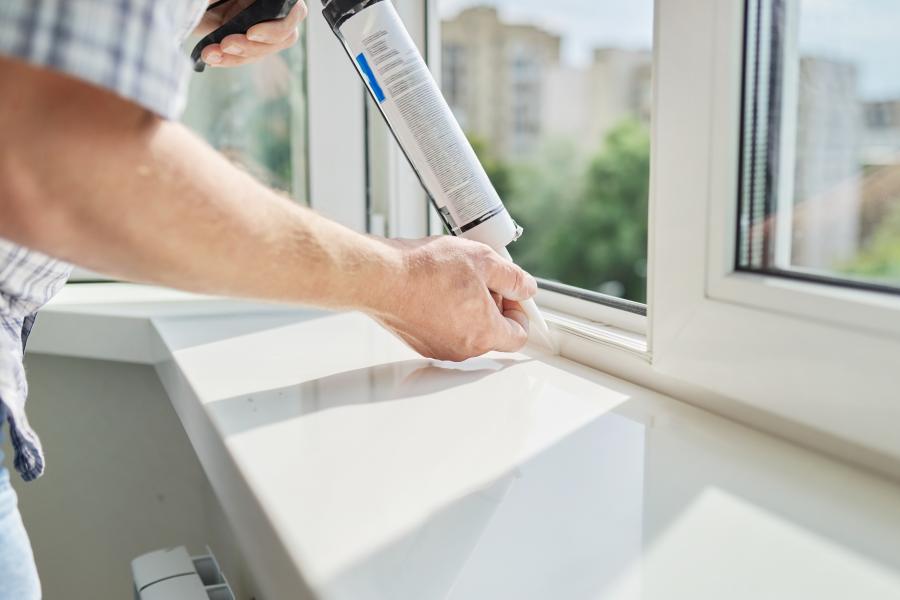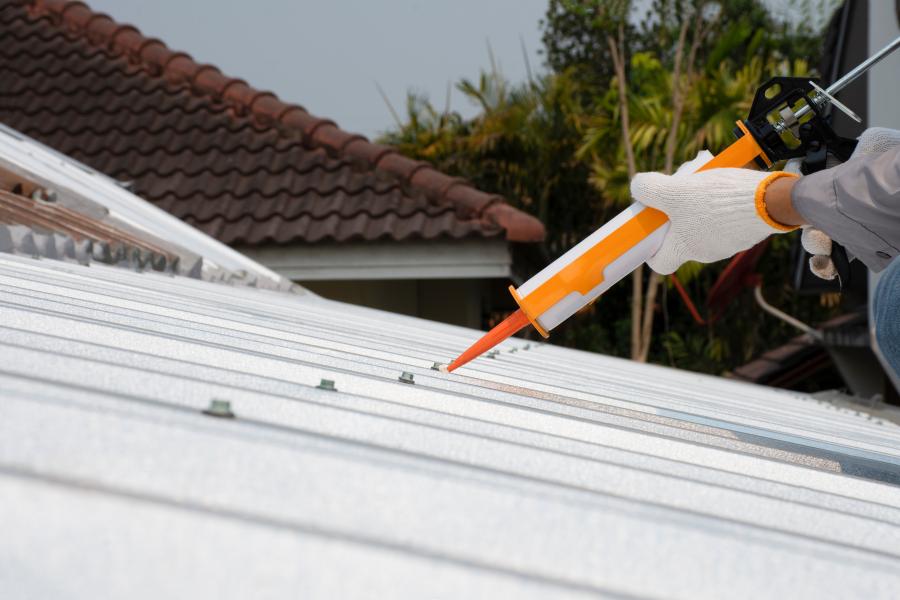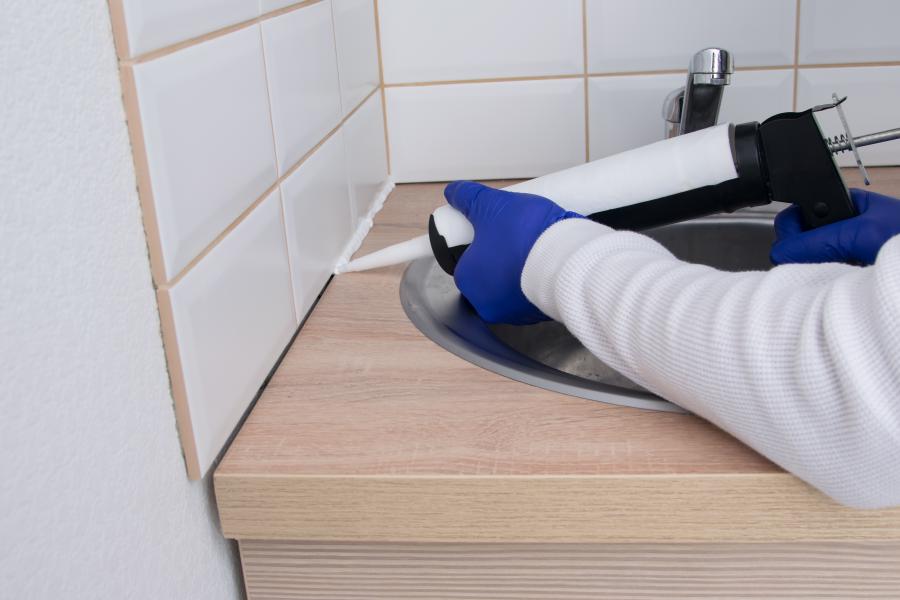Expert guidance from BoPin Construction Chemicals – understanding next-generation sealing technology
The New Generation of Construction Sealants
For decades, silicone dominated the professional sealant market. Its flexibility, durability, and weatherproofing made it the default choice for countless applications.
But technology has evolved. MS polymer sealants represent the next generation—combining silicone’s best properties with capabilities silicone simply cannot match.
If you’re a contractor, builder, or serious DIYer, understanding MS polymer technology helps you select the right product for every job. Sometimes silicone remains the best choice. But increasingly, MS polymers offer superior solutions.
This comprehensive guide will explain what MS polymer sealants are, how they compare to silicone, and when to choose each technology. You’ll learn about real-world applications where MS polymers excel and situations where silicone still makes sense.
¿El resultado? The knowledge to specify the optimal sealant for every application, improving both performance and efficiency.
1. What Are MS Polymer Sealants?
Understanding the technology helps you appreciate why MS polymers are revolutionizing professional sealing.
The Chemistry Behind MS Polymers
MS stands for “Modified Silane” or “Silyl-Modified.” These sealants are based on polyether polymers that have been modified with silane groups.
This hybrid chemistry creates a unique product that doesn’t fit neatly into traditional sealant categories. It’s neither pure silicone nor standard polyurethane, but something entirely different.
The molecular structure provides the best properties of both technologies while eliminating many of their weaknesses.
How MS Polymers Cure
Like silicone, MS polymers cure through moisture exposure. When the sealant contacts humidity in the air, a chemical reaction occurs that transforms the liquid polymer into an elastic solid.
This moisture-cure system means:
- No mixing required (single-component products)
- Curing progresses from outside to inside
- Humidity and temperature affect cure speed
- The material remains workable for 10-20 minutes after application
Unlike polyurethane adhesives, MS polymers don’t contain isocyanates. This makes them safer to use and eliminates many health and handling concerns.
The Evolution of Sealant Technology
First Generation: Polysulfides (1940s-1960s)
- Flexible but poor weathering
- Strong odor and staining issues
- Replaced by better technologies
Second Generation: Silicones (1960s-present)
- Excellent UV and weather resistance
- Superior temperature range
- Limited paintability and adhesion challenges
Third Generation: Polyurethanes (1970s-present)
- Strong adhesion and abrasion resistance
- Paintable but sensitive to moisture during cure
- Isocyanate health concerns
Fourth Generation: MS Polymers (1990s-present)
- Combines best properties of previous generations
- Eliminates many traditional compromises
- Represents current state-of-the-art technology
2. MS Polymer vs Silicone: The Professional Comparison
Understanding the differences helps you select the right technology for each application.
Comprehensive Performance Comparison
| Property | MS Polymer | Silicona | Winner |
|---|---|---|---|
| Adhesion to Diverse Materials | Excellent (no primer needed on most surfaces) | Good (primers often required) | MS Polymer |
| Pintabilidad | Excellent (accepts all paint types) | Poor (most paints won’t adhere) | MS Polymer |
| UV Resistance | Muy bien | Excelente | Silicona |
| Rango de temperatura | -40°C a +90°C | -50°C to +150°C+ | Silicona |
| Resistencia química | Bien | Excelente | Silicona |
| Capacidad de movimiento | ±25% to ±50% | ±25% to ±50% | Tie |
| Abrasion Resistance | Excelente | Fair | MS Polymer |
| Tooling Time | 10-20 minutes | 5-15 minutes | Silicona |
| No Isocyanates | Yes (safer) | N/A | MS Polymer |
| Odor During Cure | Minimal | Varies (acetoxy has vinegar odor) | MS Polymer |
| Cost per Unit | Moderate to High | Low to Moderate | Silicona |
Key Advantage #1: Superior Adhesion
MS polymers bond to virtually everything without primers.
Silicone often requires primers on porous surfaces like concrete, wood, or metal. MS polymers typically don’t. They chemically bond to:
- Metals (including galvanized steel and aluminum)
- Hormigón y mampostería
- Madera y productos derivados de la madera
- Most plastics
- Coated surfaces and paint
- Glass and ceramic
This universal adhesion saves time and cost by eliminating primer application in most scenarios.
Key Advantage #2: Paintability
This single property makes MS polymers essential for certain applications.
Most paints won’t adhere to cured silicone. The silicone’s non-stick surface repels paint, causing it to peel or bead up.
MS polymers accept virtually all paint types:
- Water-based latex paints
- Oil-based paints
- Epoxy coatings
- Polyurethane finishes
For any application where the sealant will be painted, MS polymer is often the only practical choice.
Key Advantage #3: Cleaner Installation
MS polymers don’t migrate oils or stain adjacent surfaces.
Silicone sealants can release oils during cure that migrate into porous materials. On natural stone, this creates permanent staining. Even on non-porous surfaces, silicone residue can be difficult to clean.
MS polymers cure clean. Any excess material wipes away easily before cure, and there’s no risk of oil migration into adjacent surfaces.
When Silicone Still Wins
Despite MS polymer advantages, silicone remains superior for specific applications:
Extreme temperature applications: Silicone handles continuous temperatures up to 150°C and intermittent exposure even higher. MS polymers max out around 90°C continuous.
Maximum UV exposure: While MS polymers have very good UV resistance, silicone’s inorganic structure provides even better long-term UV stability in extreme sun exposure.
Exposición química: Industrial facilities with aggressive chemicals still typically specify silicone for its superior chemical resistance.
Aquarium and permanent water immersion: Silicone remains the standard for aquariums and applications with continuous water submersion.
Cost-sensitive high-volume applications: When primer application isn’t required and paintability doesn’t matter, silicone’s lower cost can be deciding factor.
3. Real-World Applications: When to Choose MS Polymer
Understanding where MS polymers excel helps you specify them confidently.
Window and Door Installation
MS polymer sealants are transforming window and door installation practices.
Why MS polymers excel here:
Superior adhesion to frames and substrates: Windows and doors involve multiple materials—aluminum, vinyl, wood, fiberglass, concrete. MS polymers bond to all of them without primers.
Movement accommodation: Windows experience significant thermal movement and structural flex. MS polymers’ ±50% movement capability handles these stresses without adhesion loss.
Paintability for interior trim: When window frames need painting after installation, MS polymer accepts paint perfectly. Silicone would require careful masking to avoid unpaintable areas.
Clean installation: No oil migration means no staining of window frames or surrounding materials.
BoPin MS-220 Window & Door Sealant specifically addresses these requirements with formulation optimized for fenestration applications.
Metal Roofing and Cladding
Metal building applications demand products that handle extreme movement and metal adhesion.
Why MS polymers are specified:
Non-corrosive to metals: MS polymers won’t corrode galvanized steel, aluminum, or other metals. Some silicone formulations can cause corrosion on certain metals.
Extreme movement capability: Metal roofing expands and contracts dramatically with temperature. Products like BoPin MS-340 Metal Roof Sealant handle ±50% movement without losing adhesion.
Low-temperature application: Many MS polymers can be applied at -10°C or lower, extending the construction season.
Vibration resistance: Metal buildings flex and vibrate in wind. MS polymers maintain seal integrity despite constant movement.
Color-matching capability: MS polymers accept paint, allowing custom color matching to metal panel finishes.
Facade and Expansion Joints
Modern building facades require sealants that accommodate significant movement while maintaining appearance.
Performance requirements:
High movement capability: Facade panels move independently with thermal cycling and building deflection. ±25-50% movement capability is essential.
Long-term weatherproofing: Facades face decades of sun, rain, temperature extremes, and pollution exposure.
Non-staining on multiple materials: Natural stone, precast concrete, glass, and metals all appear in modern facades. The sealant must not stain any of them.
UV stability: Constant sun exposure requires excellent UV resistance for maintaining both properties and appearance.
MS polymers meet all these requirements while offering paintability that silicone cannot match.
Heavy-Duty Bonding Applications
Some MS polymer formulations provide structural-grade adhesion.
BoPin MS-850 High-Strength Construction Adhesive demonstrates what advanced MS polymer technology can achieve:
Immediate grab strength: >75 kg/m² initial grab eliminates need for temporary supports during installation.
Final bond strength: Up to 3.0 MPa tensile strength provides permanent structural bonding.
Zero shrinkage: Maintains dimensional stability critical for precision installations.
Las aplicaciones incluyen:
- Panel bonding in construction
- Heavy stone and tile installation
- Montaje en espejo (seguro para respaldo de espejo)
- Countertop and stair tread installation
- Structural element bonding
These performance levels rival or exceed traditional polyurethane construction adhesives while eliminating isocyanate health concerns.
4. When to Choose Silicone Instead of MS Polymer
MS polymers don’t replace silicone in all applications. Understanding where silicone remains superior prevents specification mistakes.
High-Temperature Applications
Silicone dominates when heat exceeds MS polymer capabilities.
Applications requiring silicone:
- Engine and exhaust system sealing (temperatures to 300°C+)
- Industrial oven and furnace sealing
- High-temperature HVAC ductwork
- Chimney and flue connections
- Appliance gasket applications
Read our high-temperature silicone guide for detailed information on these applications.
Sanitary and Wet Area Applications
Bathroom and kitchen sealing traditionally use silicone for good reasons.
Why silicone often remains preferred:
Established performance history: Decades of proven performance in wet environments builds confidence.
Anti-mold formulations: Sanitary silicones with advanced biocides provide excellent mold resistance.
Resistencia química: Household cleaners and personal care products contain aggressive chemicals. Silicone handles them without degradation.
Water immersion performance: Constant water exposure in showers and around sinks doesn’t degrade silicone properties.
That said, MS polymers are making inroads in these applications with products specifically formulated for wet areas. The choice increasingly depends on specific project requirements.
Natural Stone Applications
Both technologies work on stone, but selection depends on specific requirements.
Silicone advantages for stone:
- Non-staining neutral cure silicones are well-established for stone
- Temperature and UV resistance for outdoor stone installations
- Proven long-term performance data
MS polymer advantages for stone:
- Superior adhesion without primers
- Paintability for restoration applications
- Cleaner installation with no oil migration
For premium natural stone installations, BoPin 635 Silicona de piedra natural provides certified non-staining performance with excellent stone compatibility.
Aquariums and Permanent Water Immersion
Silicone remains the standard for aquarium construction and permanent water submersion.
The decades of proven performance and established safety for aquatic life make silicone the conservative, reliable choice for these critical applications.
5. Cost Analysis: Total Project Economics
Initial cost per tube doesn’t tell the whole story. Understanding total project costs helps justify product selection.
Upfront Cost Comparison
Material costs (approximate):
- Basic silicone sealant: $3-8 per tube
- Premium silicone sealant: $8-15 per tube
- MS polymer sealant: $10-18 per tube
- High-performance MS polymer: $15-25 per tube
At first glance, silicone appears more economical. But consider the complete picture.
Hidden Costs That Change the Calculation
Primer requirements:
When silicone requires primer (common on metals, wood, and porous surfaces):
- Primer cost: $15-30 per quart
- Labor for primer application
- Waiting time for primer drying
- Additional equipment cleaning
MS polymer’s superior adhesion often eliminates primer, saving both material and labor costs that can exceed the sealant price difference.
Painting requirements:
When sealed joints need painting:
- Careful masking around silicone joints
- Touch-up paint application
- Risk of paint adhesion failure on silicone
- Aesthetic compromises
MS polymer accepts paint directly, saving masking time and providing better finished appearance.
Rework and failure costs:
Sealant failure costs far more than the original sealant:
- Complete removal of failed sealant
- Surface restoration and preparation
- New sealant and labor
- Damage from water penetration or air leakage
- Lost productivity and project delays
Specifying the right product the first time prevents these expensive failures.
Labor Efficiency
Professional installation time matters:
MS polymers often install faster due to:
- No primer application time
- Reduced surface preparation requirements
- Wider application temperature range
- Better tooling characteristics
On large commercial projects, labor savings can dramatically exceed material cost differences.
Lifecycle Cost Analysis
Service life affects total cost of ownership:
Both silicone and MS polymers typically provide 15-20+ year service life with proper installation. The key difference is maintenance requirements:
MS polymers:
- Can be repainted if appearance changes needed
- Often easier to clean and maintain
- Better resistance to mechanical damage
Silicone:
- May yellow or chalk over time (depending on formulation)
- Cannot be painted if appearance refresh needed
- More susceptible to physical damage in traffic areas
ROI Calculation Example
Window installation project: 50 windows
Silicone option:
- Sealant: 15 tubes × $7 = $105
- Primer: 2 quarts × $20 = $40
- Labor for primer: 3 hours × $45 = $135
- Total: $280
MS polymer option:
- Sealant: 15 tubes × $12 = $180
- No primer needed
- Labor savings: 3 hours
- Total: $180
MS polymer saves $100 on material/labor while providing paintable finish and superior long-term performance.
6. Application Best Practices for MS Polymer Sealants
Proper technique ensures you get the performance MS polymers are capable of delivering.
Preparación de la superficie
MS polymers are more forgiving than silicone, but preparation still matters.
Clean and dry surfaces are essential:
- Remove all dust, dirt, oil, and loose material
- Use appropriate cleaning solvents (isopropyl alcohol works well)
- Asegúrese de que las superficies estén completamente secas antes de la aplicación.
- Remove any old sealant completely
Frost and condensation precautions:
- Don’t apply to frosted or condensation-covered surfaces
- Moisture on the surface can cause bubble formation
- Cold surfaces may slow or prevent proper adhesion
Porous surface considerations:
While MS polymers don’t typically require primers, extremely porous or dusty surfaces may benefit from primer application. Consult manufacturer recommendations for specific substrates.
Diseño conjunto
Proper joint geometry maximizes MS polymer performance.
Relación óptima entre anchura y profundidad: 2:1
- 12mm wide joint should be 6mm deep
- This geometry ensures proper stress distribution
- Prevents excessive strain during movement
Backing material usage:
- Use closed-cell polyethylene foam backing rod
- Controls joint depth precisely
- Prevents three-sided adhesion that causes failure
- Essential for joints wider than 10mm
Movement accommodation:
- Design joints to be at least 4× anticipated movement
- Account for thermal expansion coefficients of materials
- Consider structural deflection in joint sizing
Técnica de aplicación
MS polymers have slightly different handling than silicone.
Preparación del cartucho:
- Corte la boquilla en un ángulo de 45 grados
- Size opening to match joint width
- Ensure clean, burr-free cut
Application method:
- Maintain consistent gun pressure
- Apply at steady speed for uniform bead
- Fill joint completely without voids
- Work in sections manageable for tooling time
Tooling window:
Most MS polymers provide 10-20 minute tooling window before skinning. This is similar to neutral cure silicone but longer than acetoxy silicone.
Tool the bead immediately after application:
- Use wet tooling stick or finger with soapy water
- Create slightly concave profile for water shedding
- Ensure complete contact with both joint surfaces
- Remove any excess immediately
Consideraciones sobre el curado
MS polymers cure through moisture exposure like silicone, but with some differences:
Cure rate: Typically 2-3mm per 24 hours at 23°C and 50% relative humidity.
Temperature effects:
- Cold temperatures slow curing significantly
- Warm temperatures accelerate curing
- Very low humidity slows cure rate
Full cure time:
- Uso ligero: 24 horas
- Full mechanical properties: 7-14 days
- Before painting: Allow at least 48 hours (consult product specifications)
Common Mistakes to Avoid
Three-sided adhesion:
When sealant adheres to three surfaces instead of two, it cannot accommodate movement properly. Always use backing rod or bond breaker tape at the base of the joint.
Over-tooling:
Excessive tooling removes sealant from the joint and weakens adhesion. Tool once with proper technique rather than multiple passes.
Painting too soon:
While MS polymers accept paint, they must cure adequately first. Painting uncured sealant traps solvents and prevents proper cure. Follow manufacturer cure time recommendations.
Contamination during cure:
Dust, dirt, or water contact during early cure can mar the surface or affect properties. Protect freshly applied sealant until skin formation completes.
7. MS Polymer Sealant FAQ
Can MS polymer sealants be used on all the same applications as silicone?
Not quite. While overlap is substantial, each technology has specific strengths.
MS polymers excel when you need:
- Superior adhesion to diverse materials
- Pintabilidad
- Cleaner installation without oil migration
- Applications from -40°C to +90°C
Silicone remains preferred when you need:
- Extreme temperature resistance (above 90°C continuous)
- Maximum UV stability in harsh sun exposure
- Proven performance in specific applications (aquariums, high-heat)
- Lower material cost when primers aren’t required
Many applications work well with either technology. Selection often comes down to specific project requirements and economics.
How long do MS polymer sealants last compared to silicone?
Both technologies provide comparable service life: 15-20+ years with proper installation.
Factors affecting longevity:
- Quality of surface preparation
- Appropriate product selection for application
- Joint design and movement accommodation
- Environmental exposure conditions
- Prácticas de mantenimiento y limpieza
MS polymers may actually outlast silicone in certain applications:
- Better abrasion resistance in traffic areas
- Superior adhesion reduces edge pullback
- No oil migration that can compromise long-term bonds
Silicone may provide longer life in:
- Extreme UV exposure environments
- Aplicaciones de alta temperatura
- Maximum chemical exposure
Both technologies have proven track records exceeding 20 years in properly designed and installed applications.
Are MS polymer sealants safe for food contact areas?
Standard MS polymer sealants are not certified for direct food contact applications.
Like most construction sealants, MS polymers are designed for building applications, not food processing environments.
For food-safe sealing:
- Use products specifically certified to NSF/ANSI 51 standards
- Verify certification for your specific application
- Consult food safety professionals for critical applications
Read our food grade sealant guide for comprehensive information on food-safe sealing requirements.
Can you apply MS polymer sealants in cold weather?
Yes, with proper precautions. MS polymers often perform better than silicone in cold conditions.
Application temperature ranges:
- Standard MS polymers: Typically +5°C to +40°C
- Low-temperature MS polymers: Can work down to -10°C or lower
- Always verify specific product specifications
Consideraciones sobre el clima frío:
- Cure rate slows significantly in cold temperatures
- Protect from frost during cure
- Store cartridges at room temperature before use
- Work during warmest part of day when possible
- Consider low-temperature formulations for winter work
Products like BoPin MS-340 can be applied at -10°C, extending the construction season for exterior work.
Do MS polymer sealants require special guns or equipment?
No. MS polymers use standard sealant application equipment.
Equipment needed:
- Standard manual or pneumatic sealant gun
- Compatible with both cartridges and foil packs
- Same guns used for silicone or polyurethane sealants
Gun selection tips:
- Professional-grade guns provide better control
- Higher thrust ratios (12:1 or 18:1) help with viscous materials
- Well-maintained equipment ensures consistent application
Cleanup:
- Clean tools immediately after use
- Uncured material removes with mineral spirits or MS polymer cleaner
- Don’t let material cure in gun mechanism
What’s the shelf life of MS polymer sealants?
Typical shelf life is 12-18 months when stored properly.
Storage requirements:
- Store at +5°C to +25°C
- Keep cartridges upright
- Protect from freezing and excessive heat
- Avoid direct sunlight exposure
- Keep containers sealed until use
Signs of material degradation:
- Significantly thickened or thinned consistency
- Separation of components
- Difficult extrusion from cartridge
- Extended or failed cure
Rotating stock (FIFO – First In, First Out) ensures you use oldest material first, minimizing waste from expired products.
Conclusion: Selecting the Right Technology for Each Application
Both MS polymers and silicone are excellent technologies. Success comes from understanding their distinct strengths and selecting appropriately.
Choose MS polymer sealants when:
- Superior adhesion to multiple materials without primers provides project value
- Paintability is required or desired
- Working with metals prone to corrosion from other sealant types
- Clean installation without oil migration matters
- Temperature range of -40°C to +90°C is adequate
- Abrasion resistance or physical durability is important
Choose silicone sealants when:
- Extreme high temperatures (>90°C continuous) are involved
- Maximum UV resistance for intense sun exposure is critical
- Harsh chemical exposure requires superior resistance
- Established performance in specific applications (aquariums, sanitary) provides confidence
- Cost optimization on high-volume projects where primer isn’t required
Many modern applications benefit from MS polymer advantages that weren’t available a generation ago. As technology continues advancing, MS polymers increasingly become the default specification for new construction.
The key to success: Match the technology to your specific requirements rather than defaulting to familiar choices.
Professional-Grade MS Polymer Solutions
BoPin Construction Chemicals offers a complete range of MS polymer products engineered for professional construction applications.
For window and door installation: BoPin MS-220 Window & Door Sealant – Optimized for fenestration with excellent adhesion, movement capability, and weatherproofing.
For metal roofing and facades: Sellador para techos y paneles metálicos BoPin MS-340 – ±50% movement capability, non-corrosive to all metals, low-temperature application capability.
Para uniones de alta resistencia: BoPin MS-850 High-Strength Construction Adhesive – Structural-grade adhesion with immediate grab, eliminating need for temporary supports.
Need specification guidance for your specific project? Our technical team provides expert support for product selection, joint design, and application planning.
Contactar con el soporte técnico → | Explore All MS Polymer Products →
BoPin Construction Chemicals – Professional sealing and bonding solutions with expert technical support. When performance matters, specify products engineered for your specific application.





